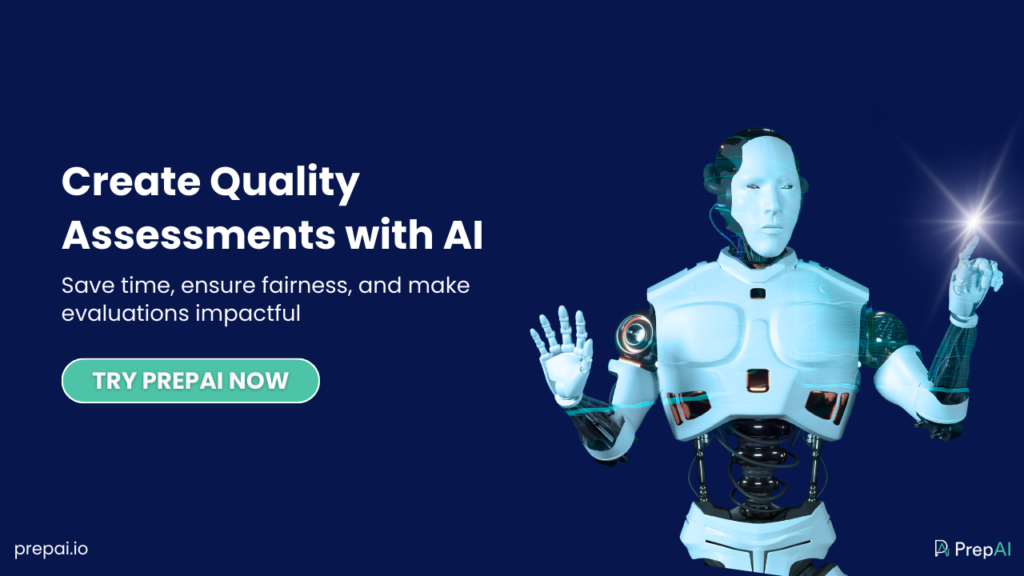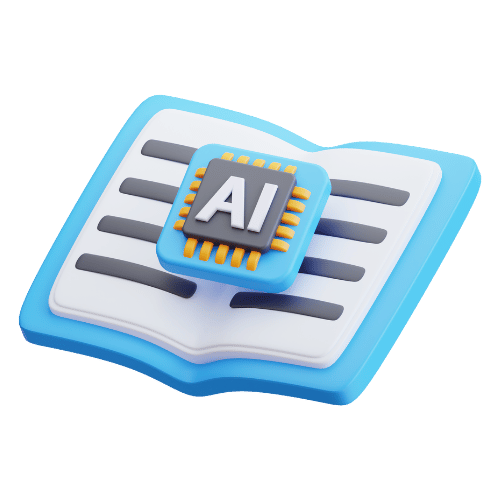AI assessment tools offer unbiased, consistent, and transparent means to conduct exams and measure students’ abilities. Here, we’ll discuss how AI tools can help teachers shift the focus from lengthy exams to quality assessments.
We cannot emphasize the need for education in today’s world. Countries in Africa also feel the same. They have been prioritizing education while actively trying to bridge the gap between students and schools. At the same time, there’s a focus on teacher training programs and initiatives to attract more people to the teaching profession. As more kids join schools, there will be an increase in demand for teachers to guide them.
On the one hand, countries like South Africa are making strides forward through technological innovation and AI adoption in the education system. On the other hand, some African countries are still in the early stages of development, making the internet and schools accessible to everyone. That said, they seem to agree that they have to make deliberate and conscious efforts to strengthen their educational models and provide the African youth with more learning and growth opportunities.
An easy way to encourage technological adoption is through AI testing tools. That’s because assessments are integral to every educational model. From primary schools to universities, students have to participate in various exams at multiple levels. The type of assessments can also influence student participation. That’s why it is vital to create quality assessments that focus on evaluating the skills and competencies of students instead of lengthy and boring tests with a limited focus.
Subjective and Objective Assessments with AI
Exam question papers come in different types. Subjective questions are the ones that require detailed theoretical answers. These can be short descriptive questions or essays, and help determine whether students understood the concepts in detail and can recall the content accurately. Objective questions are simpler and can be classified into multiple-choice, matching, jumbled sentences, true or false, fill-in-the-blanks, etc. These are greater in number and easier to attempt as they don’t require detailed responses. Each type of objective question has its advantages.
Quality assessment in education is all about creating a balance between subjective and objective questions, limiting the length of the test paper, and choosing the right question types and difficulty levels to accurately measure the strengths and weaknesses of the students.
Instead of manually creating such assessments, teachers can use AI quiz generators like PrepAI to automate the process. Powered by artificial intelligence and natural language processing (NLP) algorithms, the quiz generators can create subjective and objective assessments of high quality by converting the input content into diverse question types. This saves time and reduces the workload on teachers. It also ensures that educational institutions can consistently create quality assessments.
Bloom’s Taxonomy Support for Cognitive Tests
A quiz generator like PrepAI is supported by the Bloom’s Taxonomy framework, which empowers teachers to create tests that measure the higher-order thinking skills (HOTS). The framework was created by Benjamin Bloom in 1956 to classify the learning objectives and outcomes into six levels. The idea is to promote comprehensive development in children by enhancing their cognitive abilities. These abilities have been arranged in a pyramid of six levels – remember, understand, apply, analyse, evaluate, and create. While remembrance or memory power is the base of the pyramid, creation is the topmost level.
The arrangement in the pyramid shows that memory power, though at the bottom, is the foundation for everything else. A student has to remember what they have been taught in the classroom. This shouldn’t be limited to rote-based learning but should come from a place of understanding the concept. Once they remember and understand, they should be able to apply the same in various scenarios. Next are the higher-order skills like analysing what they have learned, evaluating different theories based on it, and creating something new from existing knowledge.
When teachers shift from lengthy exams to quality assessments, they can measure the students’ skills across all six levels. By using artificial intelligence in testing, teachers can not only test the mental abilities of students but can also help them improve their knowledge, soft skills, hard skills, etc.

Time-Bound Assessments and Instant Result
Another important feature of quality assessments is the ability to give immediate results and personalized feedback. Once again, an AI quiz generator helps. Since teachers can conduct exams through the same interface, they can set time limits for each question paper. The submitted answers are automatically evaluated by the tool to provide an instant score to the students.
Here, teachers can ensure that the tests don’t go on for hours, but can be completed in a shorter duration. This also keeps students more engaged in the test process. Additionally, they don’t have to delay the results. Students can know where they went wrong when the answers are still fresh in their minds. This is also a part of the learning process. Teachers don’t have to work overtime to go through dozens of answer sheets. Using an AI question answer generator creates a win-win situation for everyone involved.
Eliminating Bias and Prejudice for Quality Assessments
There’s another risk of following a manual process and conducting lengthy exams. Individual biases and prejudices can affect the assessment process. Even the best of people can have subconscious biases ingrained in them over the years. Something as simple as the time of day can also determine the mood and affect a student’s future. All such risks can be minimized with AI test case generation and automated grading.
Quality assessments are those without favouritism, bias, prejudice, and partiality. These assessments provide equal opportunities to students and are designed to allow students to showcase their skills, knowledge, and abilities. Rather than create a competition between students, teachers can encourage kids to compete against themselves and do better than in the previous exam. Factors like handwriting, classroom behaviour, interpersonal relationships, family backgrounds, income, etc., should not influence how a student’s answer sheet is evaluated, and AI can help achieve this non-biased state.
Standardization and Transparency in Assessments Using AI
Quality requires standardization, consistency, and transparency. It is the same for quality assessments, too. When teachers manually create question papers and evaluate the answer sheets, they have varied parameters and factors that affect the scores. Even with strict guidelines, the grading process is wildly diverse and can create a sense of confusion in students.
That’s where quizzes using AI tools become a better alternative. The algorithm simply converts the given input material into a test paper. Once teachers finalize the questions, the tool handles the rest. The grading system is standardized because the algorithm doesn’t get tired after reading a few answers, nor does it ‘know’ the students. It simply compares the submitted answers to the approved ones and generates the scores based on them.
Moreover, the entire process is transparent since the input provided, the test paper, the submissions, grades, etc., can be accessed from the user account history. At any given point, teachers can go back to check the previous question papers and submissions.

Final Words
A quality assessment is a combination of various aspects and focuses on showcasing the skills and abilities of students. It also provides meaningful insights for teachers to share personalized feedback that further helps students improve themselves.
Integrating AI assessment tools into classroom learning and exams can give noteworthy results for teachers, students, and the institution. A single AI tool offers multi-fold benefits that can enhance the learning experience and eventually improve the quality of education.



